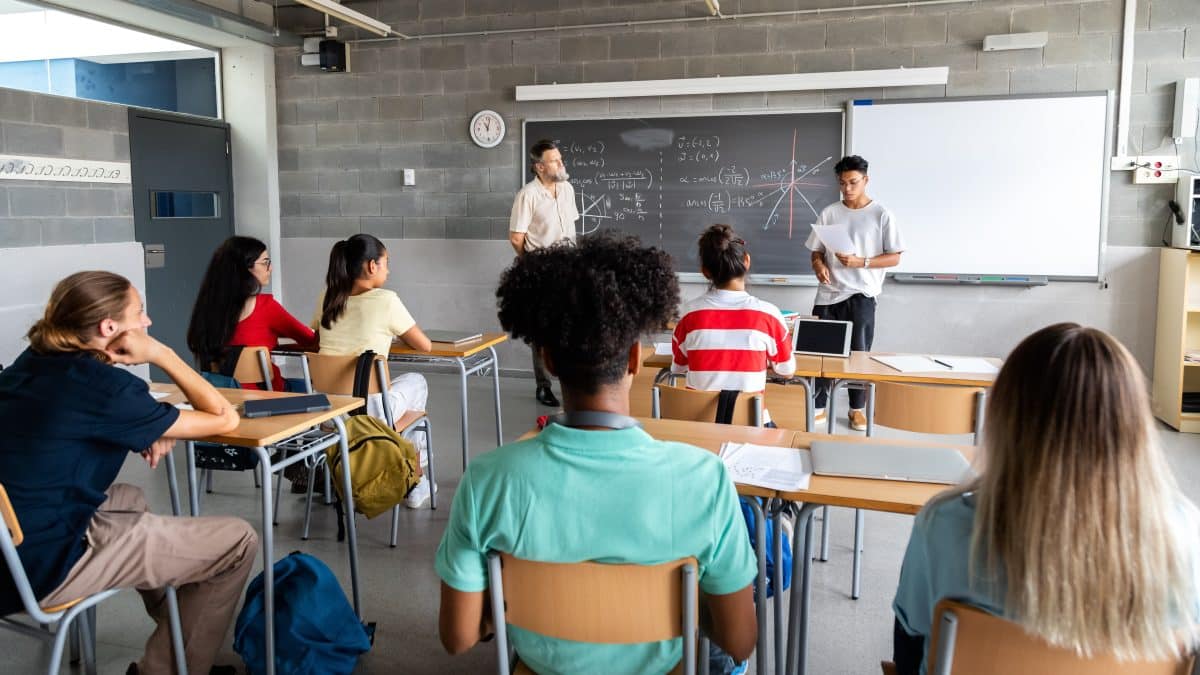Overview:
A paraprofessional is a critical tool in the building blocks as an educator. Supporting them is a step in helping recruit and retain them.
Transitioning majors in college led me to embrace a role as a floater paraprofessional, eager to explore and support in the realm of education. “Rutledge, room 32”- Walking down the hallway you see art on the walls and shiny floors glimpses into other classrooms and you arrive at room 32. Open the door and you notice learners in different areas around the room. “Come on in join a center” you hear a bellow from the left side of the room. You sit in the block area where children are building with wooden blocks, you turn and quickly duck. A block aimed straight at you comes flying your way smashes against a wall and you look up to see a little learner laughing and running towards you.
No one prepared you for this moment and no one ever does.
Recognizing the experience of paraprofessional training
Stepping into the classroom, I encountered a whirlwind of experiences, from dodging flying blocks to witnessing the laughter of eager learners. This marked the beginning of my journey as a paraprofessional, an experience that shaped my understanding of their pivotal role in education.
As a Teacher of the Deaf, I relied heavily on the assistance of paraprofessionals to ensure the smooth functioning of my classroom. Paraprofessionals offer invaluable support to teachers and learners alike. Their roles are diverse and dynamic, ranging from providing one-on-one support to learners with disabilities to assisting teachers in classroom management and instructional tasks. Yet, many of these dedicated professionals lack the necessary support to thrive in their roles.
In 2021 the Office of Special Education Programs notes that 520,637 Special Education paraprofessionals were employed to work with children with disabilities in the 2018-2019 school year. Senator Markey of Massachusetts recently introduced the Preparing and Retaining All (PARA) Educators Act that would establish a grant program to help schools recruit, train, and retain paraeducators by funding pipeline and credentialing programs, high-quality professional development, and higher wages.
To address this gap, we must prioritize the following strategies:
Comprehensive Training and Ongoing Professional Learning
Invest in training programs covering inclusive practices, behavior management, and communication strategies. Offer regular professional development sessions tailored to their needs, even if it means finding just 15 minutes a week for a quick skill builder. Because many paraprofessionals I worked with arrived when learners arrived and left right after we would find 15 minutes with the week to do a quick skill builder to build capacity around a new skill needed to support learners.
Clear Expectations and Role Definition
Define clear job descriptions and expectations, fostering regular communication and feedback. I found creating a handbook and weekly check-ins invaluable for maintaining alignment and addressing challenges. We checked in weekly both signing off to document the meeting and making changes in the handbook as we encountered new challenges and/or successes within the environment.
Peer Support and Collaboration
Encourage a culture of collaboration among paraprofessionals, facilitating knowledge exchange and continuous improvement. When I was the department chair on campus for our special education deaf/hard of hearing department, I found ways to partner paraprofessionals together to learn from one another. Curating and organizing collaborative activities and peer mentoring programs within the department to promote shared learning and protect the time that was set aside for meaningful support.
Recognition and Appreciation
Show appreciation for their hard work through gestures such as liveable wages, awards, public acknowledgments, and personalized gestures like favorite snacks or birthday celebrations. In addition to liveable wages, connecting with them, and providing incentives and recognition for appreciation, I involved paraprofessionals in the co-creation of lessons and activities to emphasize their value in the educational process. By doing this we connected and curated a culture of belonging and awareness of passion and values.
A paraprofessional is an essential members of the education team, instrumental in fostering inclusive learning environments. By addressing their needs and providing adequate support, we can ensure they receive the recognition and empowerment they deserve. Let us stand as advocates for the advancement of paraprofessionals, recognizing them as true champions of inclusive education. What will you do to support a paraprofessional today?
Felicia Rutledge, Ph.D. serves as the Director of Nevada Special Education Technology Assistance Project at the University of Nevada, Reno, supporting educators with the implementation of tiered supports. She is a special education consultant & coach. Her leadership began in the classroom over 10 years ago serving students who are Deaf/Hard of Hearing and their families. Dr. Rutledge is an Edu-activist for wellness, Deaf Culture, learners with diverse needs, and healing-centered, culturally affirming, relevant cultures and climates. She is a devoted mother committed to learner achievement, supporting families, human talent development, and the implementation of systems that are rooted in equity, access, joy, brilliance, and liberation. She is also a Teach Plus Nevada Senior Policy Fellow and a Nevada Succeeds InspirEd Global Fellowship Alumna.






